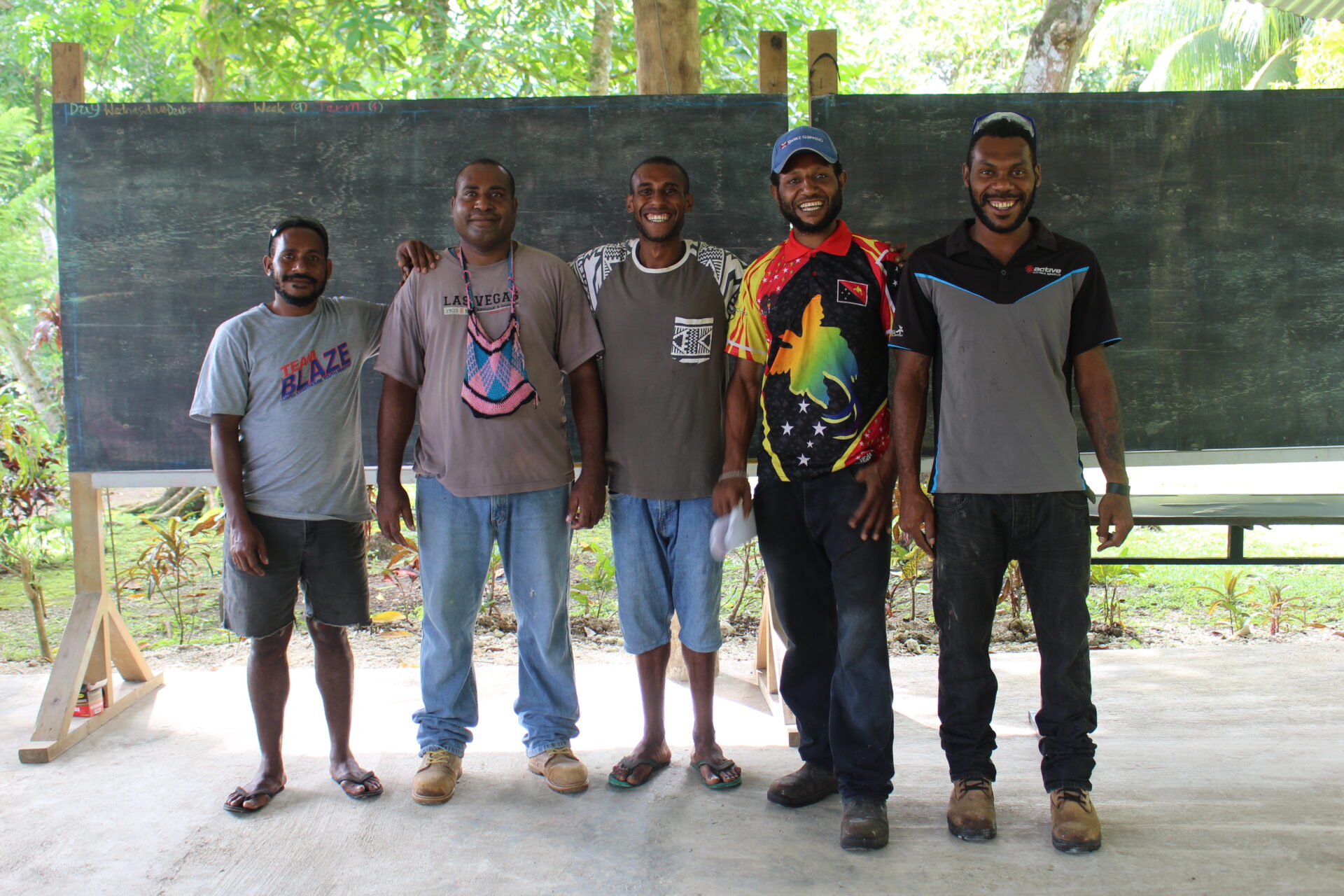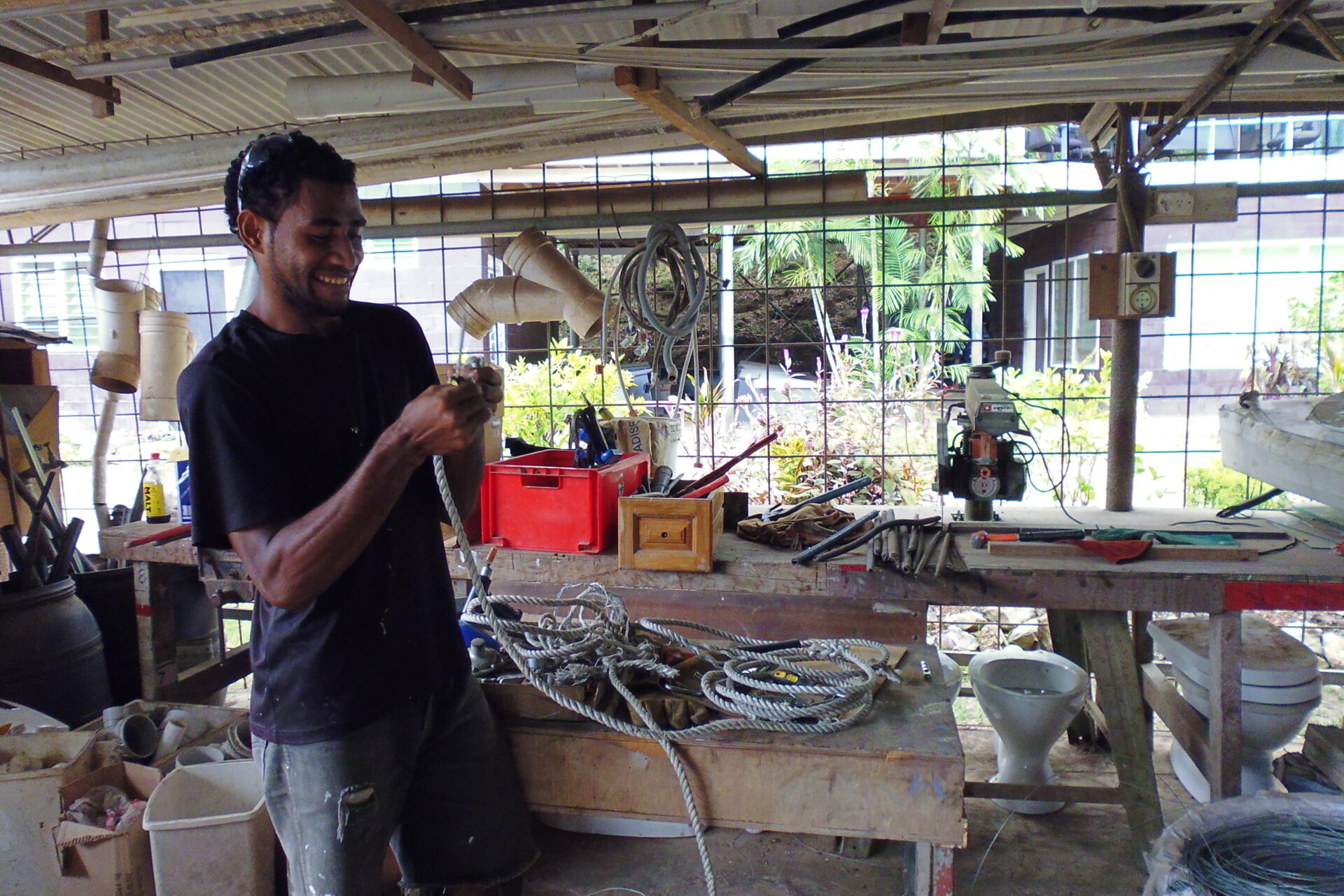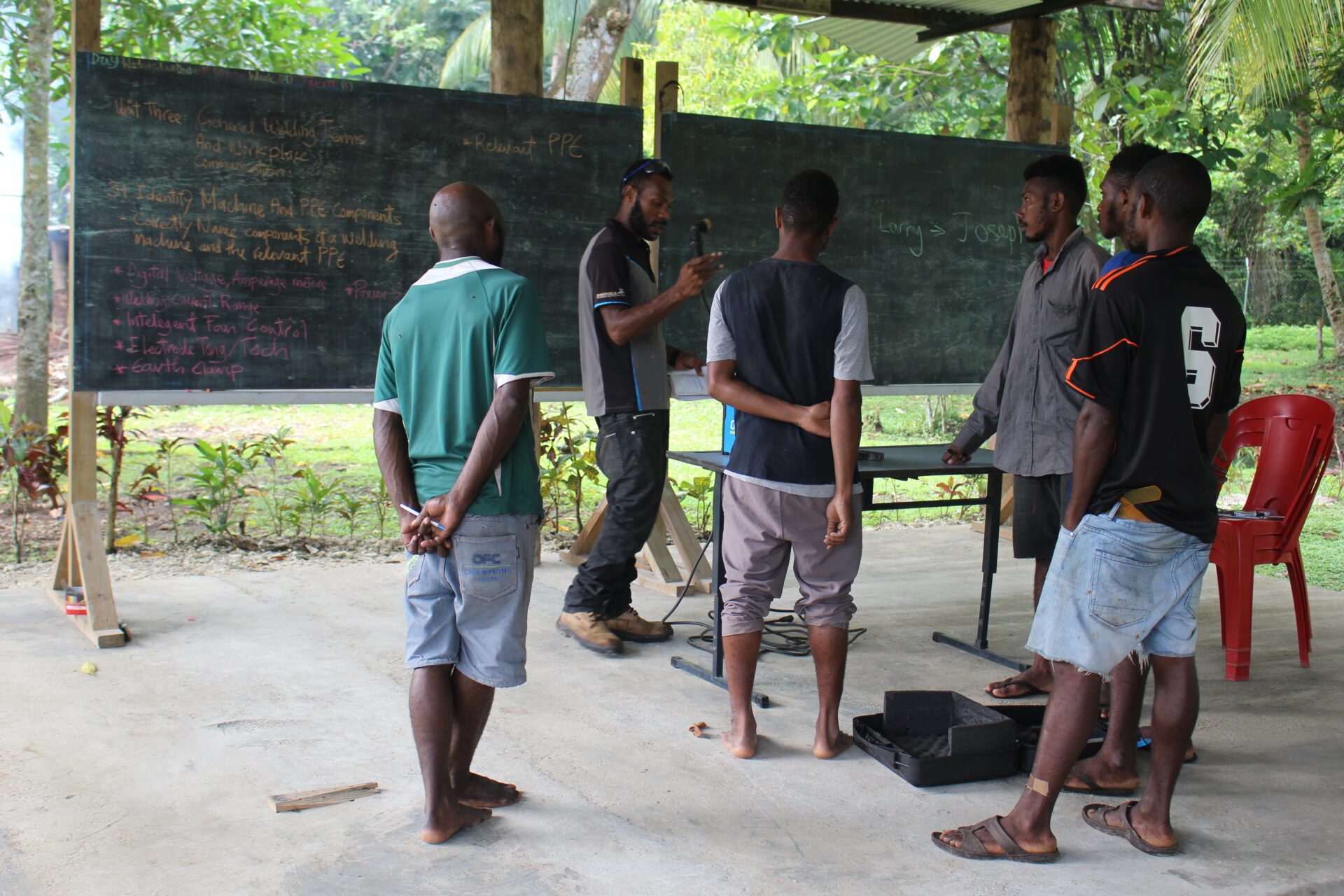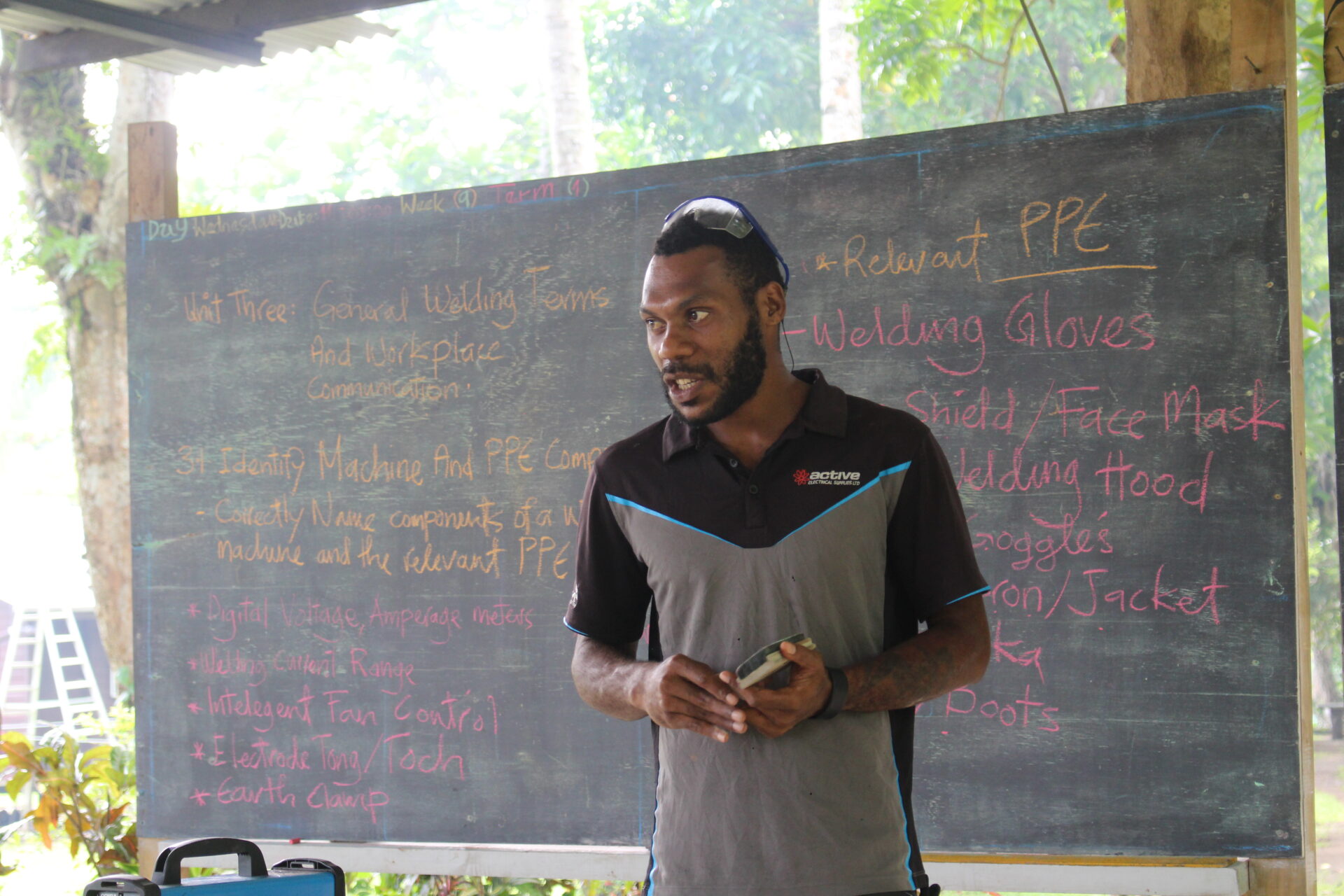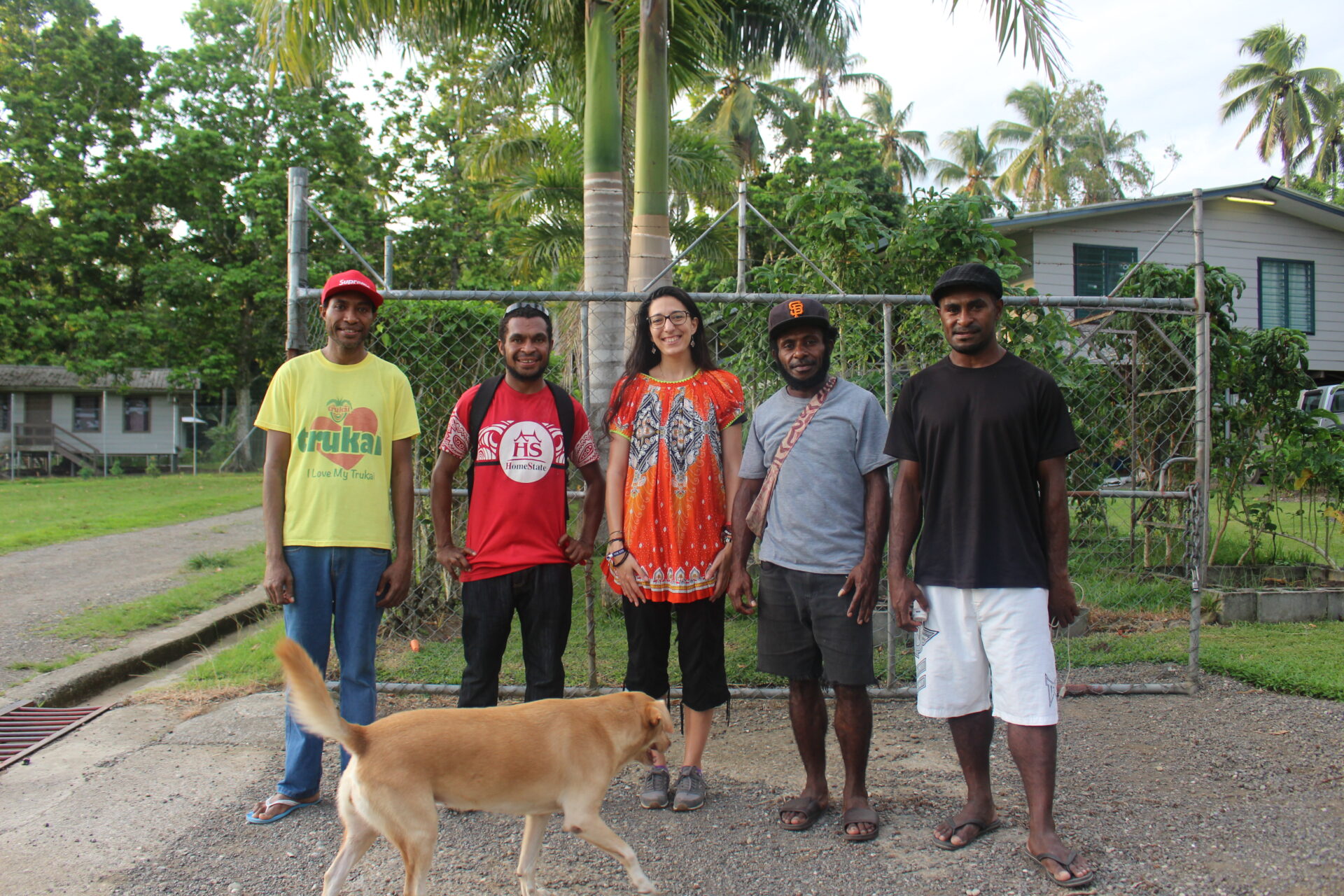THE PROJECT “STANDING ON MY OWN FEET”, IMPLEMENTED OVER THE PAST THREE YEARS IN PAPUA NEW GUINEA, AIMED TO SUPPORT YOUNG MEN WITH DIFFICULT SOCIOECONOMIC BACKGROUNDS TO IMPROVE THEIR LIVING CONDITIONS AND EMPLOYMENT OPPORTUNITIES THROUGH PLAY-BASED AND HANDS-ON VOCATIONAL TRAINING. NOW THE PROJECT HAS COME TO AN END, THIS ARTICLE AIMS TO HIGHLIGHT THE MAIN RESULTS AND SUCCESSFUL INTEGRATION OF PLAYFUL AND INTERACTIVE LEARNING INTO THE VOCATIONAL TRAINING PROGRAMME.
City Mission (CM), a non-profit organisation based in Port Moresby, the capital of Papua New Guinea, has been delivering it’s New Life Skills Training Centre programme for almost 30 years, offering young men the opportunity to learn car mechanics, carpentry, electrical, plumbing or welding, thereby improving their opportunities in finding decent work with the skills and knowledge gained. The vocational training is the final step of a yearlong programme supporting the young men. Many of which have lived on the streets for most of their life or have been involved in activities of illegal nature such as drug dealing, theft, etc. – to reintegrate society by acquiring life skills and employability skills, as well as basic literacy for those who haven’t completed primary education. The project was the result of a close collaboration between Swiss Academy for Development (SA4D) and CM, each contributing with their own expertise.
NEW OPPORTUNITIES THROUGH VOCATIONAL AND ENTREPRENEURIAL TRAINING
The project aimed to enhance the quality of CM’s vocational training programme in order to improve the learning of the young men and increase their chances in finding decent job opportunities. Although the programme has always been very successful and responds to the needs of hundreds of disadvantaged young men in PNG every year, it lacked structure and quality. SA4D supported CM in developing interactive curricula, aligned to the national training standards for all five trades and provided capacity building with a training of trainers-concept for interactive teaching methods. Furthermore, 14 vocational trainers obtained formal certification for their technical competencies. A safer and more spacious construction workshop was also built and fitted with new tools and equipment. Over the three years of the project, 462 young men graduated from the programme.
SUSTAINABLY INTEGRATING SPORT AND PLAY TEACHING METHODS THROUGH TRAINING OF TRAINERS AND CURRICULA DEVELOPMENT
Through the training-of-teachers workshops (TOT), the vocational trainers learned about how to prepare quality session plans, balancing theory and practice, improve verbal and non-verbal communication, group management, and using a variety of teaching materials (visuals, photos, short videos, practical demonstrations, posters, etc) as well as integrate games into their classes. The curricula include a section compiling all the games suggested by SA4D as well as those created by the trainers which they can adapt according to the learning objectives of the day and to the level or interests of the trainees. The games usually require little materials or preparation so trainers can easily integrate them into their session plans using basic materials or tools they have at hand or they can even play a game spontaneously during the class to grasp trainees’ attention or remotivate them.
SPORT AND PLAY IMPROVES CLASSROOM DYNAMICS, MOTIVATION AND LEARNING
The interactive and playful activities foster the young trainees’ learning and make the classes more fun and enjoyable for everyone, not only the students but also for the trainers. It also improves the concentration and learning capacity of the students and their participation in class. As Lera, the plumbing trainer said “I notice some big change in my classes. I feel happier and more relaxed when I am teaching, because I have the right support. I also see the boys pay more attention to the class, they are not day-dreaming. So I don’t have to do so much discipline as before.”
SPORT AND PLAY: A TEACHING APPROACH ADAPTED TO THE TARGET GROUP
It took some time for the trainers and their trainees to adapt to the games, as it was very new for them. Most trainers are past beneficiaries of CM’s programme and have never completed secondary education, they mostly have acquired their skills on the job, and have little teaching skills. Furthermore, teaching in PNG is still perceived in a very traditional, classic, teacher-centred approach (lecture style, involving little participation from the students). So trainers had unadapted preconception around teaching and trainees were surprised when first asked to speak up or move and play around the classroom. The sport and play approach is much better adapted for target groups with low to no basic education and poor literacy levels, as it is more student-centred and based on learning by doing and observing rather than reading and writing. The results of this were quickly demonstrated. After some practice in the TOTs, delivered by SA4D using interactive teaching and learning methods with the trainers, they rapidly understood the purpose and benefits of sport and play based learning and overcame initial shyness. They enjoyed experiencing this approach to learning themselves and got used to being more expressive with their entire body, movements and voice when teaching, as well as using the entire teaching space and their creativity to foster the students learning. Vali, the car mechanics supervisor explains that they have the necessary technical experience, “but we don’t always know how to give this experience to the trainees. With this new training, we can be better trainers, and it makes our skills complete.”
“THE CLASS BECAME MUCH MORE LIVELY”
As the responsible Project Manager for “Standing on my own feet”, Giovanna del Drago travelled to PNG several times in the past few years to train the teachers and ensure the projects outcome. “I remember one of the trainers being very shy when we first started the TOTs, though he was technically one of the most experienced trainers there. During one of the activities, we discussed what were good or bad examples of teaching and he gave the example of his own car mechanics trainer who would only write the lesson on the black board and let the students copy back into their notebooks for the entire session and said he thought this was probably very poor teaching. This just comes to show what sort of learning experiences they’ve had themselves which are far from interactive and playful. Part of the TOT was also for me to work with the trainers individually in their classroom to help them choose a game well-adapted to the learning objectives of their session and support them in preparing and playing the game in class if needed as well as give them feedback and advice how to better interact or lead the games with their students. When I worked with Vali, the car mechanics trainer, I was so impressed with how natural it was to him to integrate the games or invent new ones and how quickly he picked up on the method. It was also great to see the change in the students attitude. Once they had overcome the surprise of this “unusual” activity and understood what they had to do or what was expected of them, they finally got into the game and started moving around and participating. The class became much more lively and everyone was smiling and enjoying themselves while learning which was great to witness.”
EXAMPLES OF GAMES IN PRACTICE
Some games are energisers to get students motivated or get their attention back when a lot of theory or explanations have to be provided. Other games actually help in memorising or reviewing content such as definitions, names of technical items like tools and materials used in their trade, or the order of different steps in a construction or repair job. An example: a ball game which they can play at the beginning of a session to remember what was learned, students pass a ball to each other, when they catch the ball they take turns in explaining something they remember from the last session. Or the “true or false” game, during which all students stand in the middle of the classroom, the trainer reads sentences out loud, students must quickly move towards the right or left hand side of the classroom whether they think the sentence is wrong or right. “Pass in order” is a game to review steps or processes, each student is given a step from a construction or repair process (e.g. steps in fixing a water drain or in building the wooden frame of a house), then they are asked to stand in circle at random and pass the ball to whoever is the next step after theirs in the process. At the same time, these games improve students’ life skills such as team spirit, team work and communication skills which are useful and important personal skills on the workplace.
ENSURING THE PROJECT’S SUSTAINABILITY
It is important to SA4D to ensure the sustainability of a project. By working closely together, SA4D and CM were able to develop a tailor-made curricula that responded exactly to CM’s needs and create a user-friendly day-to-day tool to guide the trainers in their teaching. The curricula and teaching methods will remain in use long after the project ends. Furthermore, the teaching skills acquired by the trainers will serve them throughout their career as trainers and benefit the learning of hundreds of future students. Finally, CM will ensure the construction workshop is well-maintained by regularly purchasing new tools and machinery to replace older ones, they will also continue to increase the resources library for the trainers with books, guidelines and technical teaching manuals, a small fund has also been set up for trainers to continue getting further technical certification in their trade.

